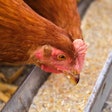
Global animal feed volumes reached 1.103 billion metric tons in 2018 — growing by 3 percent over 2017 production, according to Alltech’s 2019 Global Feed Survey. The eighth edition of the animal nutrition and feed company’s annual report gathers its data from international feed associations and 30,000 feed mills across 144 countries.
“We find this survey helps us be better advocates for agriculture and the impact that agriculture has around the world,” said Mark Lyons, Alltech’s president and CEO.
Lyons feels strong feed production is a good indicator of global economic health and an indication of macro trends in the global poultry and livestock sectors.
Survey highlights and trends include:
- The top eight feed-producing countries account for 55 percent of global production: China, the U.S., Brazil, Russia, India, Mexico, Spain and Turkey.
- Asia-Pacific continues to be the world's leading feed producer, accounting for 36 percent of global feed production.
- North America saw 2 percent growth in 2018.
- Latin America is the No. 2 producer of broiler feed; however, overall production was down in 2018.
- Africa experienced a 9 percent increase in feed production.
- In the Middle East, Iran saw the greatest growth in broiler feed production, adding 500,000 tons.
- Broiler feed production accounts for 28 percent of world volumes; pig, 27 percent; and dairy, 12 percent.
- In 2018, broiler feed production was up 3 percent globally; pig feed, 1 percent; and dairy, 3 percent.
- Pet food and equine volumes were both up 1 percent in 2018.
- Feed costs are the highest in Africa due to regulations and logistical challenges.
Lyons believes the feed industry needs to watch global consumer protein consumption, and identify what they will want in the future.
“We believe we need to be engaged to prepare for the future,” Lyons said. “We need to talk to each other and to people with different opinions and be thinking globally about how we overcome and transform our businesses to overcome future challenges.”

















